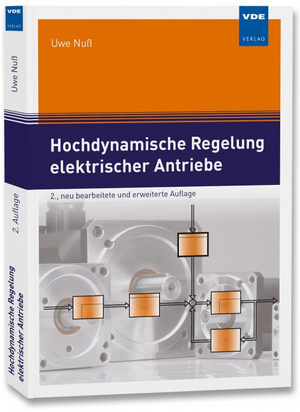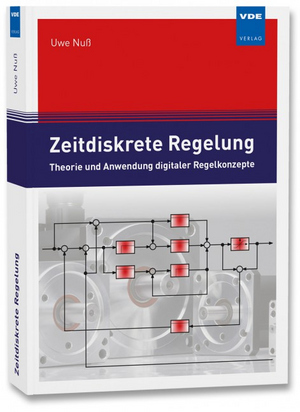Labor Elektrische Antriebe und Leistungselektronik
Electrical Drives and Power Electronics
Profile and objectives
In the Laboratory for Electric Drives and Power Electronics, students of electrical engineering and mechatronics of the 6th semester are given practical insights into the operating behavior of electric machines and power converters in laboratory exercises. The students gain their first experience with DC, asynchronous and synchronous machines as well as with power electronic circuits in group work. The interaction of the individual drive components with each other and with higher-level feed-forward and feed-back control systems is also being investigated. Students on the Bachelor's degree course "Sustainable Energy Systems" gain their first experience of power electronic actuators in the laboratory in the 4th semester. For students of the Master's degree program "Electrical Engineering and Information Technology" the "Control of Electric Drives" laboratory will take place from the winter semester 2024/25 in which participants will gain practical experience with highly dynamic, field-oriented operated three-phase drives, such as those used in traction, elevator, conveyor and machine tool drives as well as in test bench applications.
In addition, research-related projects are constantly being conducted in a way that students can participate within the framework of Bachelor's and Master's theses. The projects often deal with current challenges from industry. The focus here is on the development and further development of control algorithms for three-phase drives and for inverters for regenerative power ability. Solutions are also being sought for fundamental scientific questions in drive technology, especially in the field of drive control.
Through participation in the laboratory exercises and dealing with specific project tasks in the field of electrical drive technology, the students of the bachelor´s study courses EI, MKA and NES and their variants EI-plus and MK-plus as well as the students of the master´s study course EIM are to be enabled to consolidate and expand their basic knowledge acquired in various lectures on this topic. The aim is to put them in a position to work in the field of electrical drive technology after graduating.
The laboratory's success story
The efforts to set an active course in this field of research began in 2005 with the development of a laboratory's own controller board, which provided a platform for developing and testing proprietary control algorithms for electrical drives within the framework of student research projects and diploma theses. The forth generation of this controller board is now available. With the very powerful digital signal processor used there, complex current, speed, position and position difference control algorithms as well as control tasks can be processed in a very short time and synchronously with the pulse width modulation used.
Power units which are required to convert the manipulated variables calculated on the controller board into voltages and which provide sufficiently large currents are usually purchased and adapted to the laboratory's own controller hardware by means of so-called interface boards. In addition to level adjustments, hardware-based current and voltage monitoring and elementary fault management take place on the interface board. The laboratory has also developed its own inverters with maximum output currents of 250 A, which are used, for example, in special municipal vehicles with hybrid drives and feed the electric motor there.
In addition to the hybrid vehicle project, which was carried out with an engine and commercial vehicle manufacturer from the Black Forest, the team members developed motor emulators for Formula 1, control strategies for photovoltaic inverters, a real-time combustion engine simulation using a three-phase current drive and customer-specific controller hardware and software.
International collaboration
The laboratory employees are also active internationally. The cooperation partner for a project currently underway comes from Taiwan. A customer-specific controller board including expansion plug-in cards for encoder and current acquisition and the associated software was developed for him. To integrate the controller board for the customer's frequency inverters and to transfer know-how, a member of the laboratory team was sent to a branch of the partner in Australia for a period of nine months.
Current Projects
Currently, in addition to the further development of the software for our long-standing cooperation partners, we are also working on a project in the field of automotive test bench technology. The aim here is to achieve a very highly dynamic torque and speed imprint for test bench motors using all available degrees of freedom and to embed the solutions to be developed in a higher-level, in part web-based HIL system for overall vehicle simulation. FPGAs (Field Programmable Gate Arrays) are used here, with which the computing times for the control algorithms can be further shortened and on which state control methods already proven in other projects are to be implemented and further developed.
Laboratory engine test benches
The developed feed-back and feed-forward control methods can be tested in the laboratory on a variety of engine test benches of different power classes. The most powerful is a back-to-back test stand consisting of an asynchronous machine with a rated output of 81 kW and a permanent magnet excited synchronous machine with a rated output of 67 kW. It is characterised by the fact that in stationary operation only the power loss must be drawn from the grid. The essential part of the motor or generator power applied by the respective machines flows energy-efficiently in the circuit within the test bench via the inverters feeding them, which are connected to one another via a common DC link.
Equipment
- a height-adjustable asynchronous/synchronous motor test bench (nominal power PNom = 81 kW or 67 kW, nominal seed nNom = 2900 min-1) with torque measuring shaft (measuring range up to 500 Nm)
- eight combinable DC / asynchronous / synchronous motor test benches (maximum available nominal power PNom = 15 kW, nominal seed nmax = 2000 min-1)
- an asynchronous motor test bench (2 ´PNom = 5,5 kW, nmax = 3000 min-1) with torque measuring shaft (measuring range up to bis 200 Nm)
- two synchronous motor test benches (MNom = 3,2 Nm or 2,6 Nm, nmax = 6000 min-1) with torque measuring shaft (measuring range up to 15 Nm or 10 Nm)
- two linear drives
- two linear axes (MNom = 3 Nm or 1,1 Nm, nmax = 6000 min-1)
- a radio remote-controlled model of a four-rope grab crane, driven by gear with two frequency converter-fed asynchronous Motors
- numerous individual motors and converters up to a rated power of 11 kW
- Numerous measuring devices for current, voltage, power and speed measurement as well as for noise and vibration determination
Internships and Tutorials in the Bachelor´s Degree Programs
- Measurement of operating characteristics, losses and efficiencies of externally excited DC machines
- Control and operating behaviour of AC and three-phase current Controllers as well as of line-commutated and self-commutated power converters
- Measurement of operating characteristics, losses and efficiencies of asynchronous machines
- Speed control of converter-fed DC machines
- Speed control of converter-fed asynchronous machines
- Control and operating behaviour of converter-fed synchronous drives
- Space vector investigations on the synchronous drive
Internships and Tutorials in the Master´s Degree Program EIM
- Highly dynamic current, speed and position control of asynchronous drives
- Highly dynamic current, speed and position control of synchronous drives
- Stabilization of an inverted pendulum
- Field weakening for highly dynamic three-phase drives

